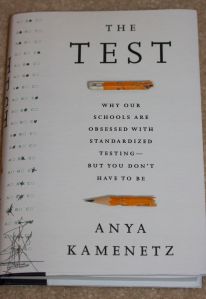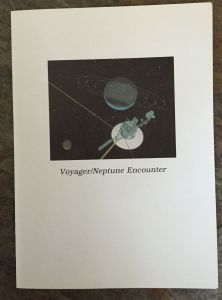 1989: I applied for a full-time summer job at the Jet Propulsion Laboratory (JPL) because my uncle was a computer scientist at JPL and encouraged me to apply. Thanks to Jan Ritchie, four of us were hired that summer to hand address VIP guest invitations and prepare packets and other materials for the big two-day Voyager/Neptune Encounter event. This was a historic encounter with the planet Neptune and its satellites by the Voyager 2 Spacecraft on August 25 and 26, 1989. It was also the BEST summer job ever.
1989: I applied for a full-time summer job at the Jet Propulsion Laboratory (JPL) because my uncle was a computer scientist at JPL and encouraged me to apply. Thanks to Jan Ritchie, four of us were hired that summer to hand address VIP guest invitations and prepare packets and other materials for the big two-day Voyager/Neptune Encounter event. This was a historic encounter with the planet Neptune and its satellites by the Voyager 2 Spacecraft on August 25 and 26, 1989. It was also the BEST summer job ever.
Even though I was still in high school, my colleagues at JPL treated me as a member of the team. In reflection, I learned a lot that summer. One, I was proud to earn my own paycheck. Two, I learned the importance of showing up to work on time, how to act and dress like a professional. Three, JPL is a special place with a culture that always made me feel like I mattered to the organization (which I later learned is not true for other workplaces). Plus, it was fun and people liked working there. And I made new friends, like Jill who is still a dear friend today (see photo below) and I keep in touch with Jan and a few others from that summer.
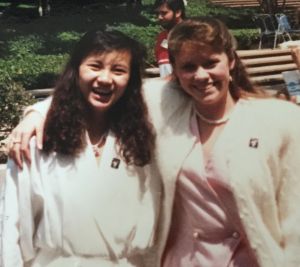 The Encounter days were a big deal. Vice President Dan Quayle came to JPL to speak and commemorate this huge accomplishment for JPL. Entertainers like Sidney Poitier and Woody Harrelson were invited and came to the celebration. After my full-time summer job ended with the Legislative Affairs Office, my contact in human resources at JPL asked if I wanted to continue working during the school year. I said yes and she found me a part-time position working for the Mechanical Systems Division. This was my senior year of high school. Every day after school, I went to work at JPL where my job was to support the administrative staff by making copies, answering the phone, and delivering time sensitive documents across the lab. Even though, I was part-time and still in high school, my supervisor gave me regular performance reviews and we had meaningful conversations about my five-year plan. The Section Manager gave everyone a pound of See’s Candies during the holidays and I was amazed he took time to deliver one to me. After high school, I went to Pasadena City College (PCC) full-time and continued working at JPL part-time. JPL encouraged people to grow and change roles within the organization. I wanted to learn and do more so was able to find a job with the Communications group. I wrote phone orders for when JPLers needed new phones or moved to different offices. This was also during JPL’s transition from analog to digital phones and the lab was replacing answering machines with voicemail so I wrote orders for those features and helped train rocket scientists (literally) on using their new phone systems. Plus, when JPL operators took lunch breaks, I stepped in to answer calls from the general public and transferred them to the appropriate people at JPL. After one year at PCC, I transferred to attend Claremont McKenna College (CMC) and my supervisor in the Communications group let me work on weekends so I had steady income my first year at CMC.
The Encounter days were a big deal. Vice President Dan Quayle came to JPL to speak and commemorate this huge accomplishment for JPL. Entertainers like Sidney Poitier and Woody Harrelson were invited and came to the celebration. After my full-time summer job ended with the Legislative Affairs Office, my contact in human resources at JPL asked if I wanted to continue working during the school year. I said yes and she found me a part-time position working for the Mechanical Systems Division. This was my senior year of high school. Every day after school, I went to work at JPL where my job was to support the administrative staff by making copies, answering the phone, and delivering time sensitive documents across the lab. Even though, I was part-time and still in high school, my supervisor gave me regular performance reviews and we had meaningful conversations about my five-year plan. The Section Manager gave everyone a pound of See’s Candies during the holidays and I was amazed he took time to deliver one to me. After high school, I went to Pasadena City College (PCC) full-time and continued working at JPL part-time. JPL encouraged people to grow and change roles within the organization. I wanted to learn and do more so was able to find a job with the Communications group. I wrote phone orders for when JPLers needed new phones or moved to different offices. This was also during JPL’s transition from analog to digital phones and the lab was replacing answering machines with voicemail so I wrote orders for those features and helped train rocket scientists (literally) on using their new phone systems. Plus, when JPL operators took lunch breaks, I stepped in to answer calls from the general public and transferred them to the appropriate people at JPL. After one year at PCC, I transferred to attend Claremont McKenna College (CMC) and my supervisor in the Communications group let me work on weekends so I had steady income my first year at CMC.
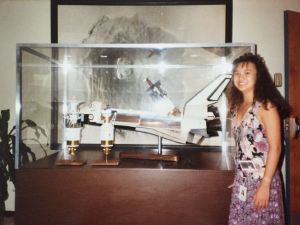
In total, I worked at JPL for about five years. At the time, I thought of JPL as just another job. But now, I see how much working there impacted how I view the world and what I value. I took for granted at the time that JPL was a place of possibilities. The people who worked there were given the space and encouragement to do the impossible every day. I recently read an essay by the current Director of JPL, Dr. Charles Elachi and it captures the culture, spirit and ethos of JPL:
l thought about how no one at JPL cares where you’re from, what color you are, what your religion is. When we need someone to analyze spectrometer data, calculate how much heat a spacecraft will encounter from the atmosphere of a distant planet, or improve our business systems, it doesn’t matter whether you’re a Muslim, a Christian, a Jew, or whether you were born in South America, Asia, Africa, or the United States. Your mind and your ideas — those are the things that matter. I believe this uniquely American spirit of optimism, the sense that anything is possible for anyone, is a key reason our nation is the world leader in space exploration. I’ve personally seen it, for example, as the leader of the science team working with the radar instrument aboard the Cassini spacecraft. Cassini is an international mission that just celebrated its 10th year of exploring Saturn and its moons, including Titan. Whenever we encounter a particularly tough issue — such as a risky flyby through the plumes shooting up from Enceladus, or flying through the gaps between Saturn’s rings — our international partners have been amazed at our optimistic spirit, our can-do attitude, our firm belief that anything is possible.
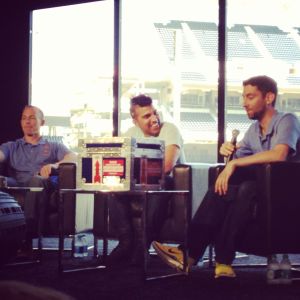
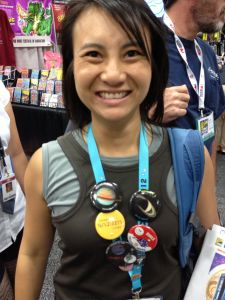 To put it in current education-ese, I had a paid summer internship at JPL in 1989 and it continued for the next five years. Yes, I made a lot of copies and did many low-skill tasks along the way. But, it made me extremely empathetic to others I’ve asked to do those same tasks. JPL also taught me about how to treat people especially when times are tough. I remember when Mars Observer was lost and there were big banners at the lab that read, “MO Phone Home.” Budgets were being slashed and some people received lay-off notices. The people I met with lay-off notices were helped by the human resources folks with reassignments to different groups and offered retraining for different jobs based on their skill sets. Because of my JPL experience, I am a big advocate of young people having access to internships or other work experiences (internships are included in a grant proposal I’m working on now). I have hired summer interns who stayed on to work well past the summers. I now understand how my ‘internship’ at JPL left lasting impressions on me and was an integral part of my life journey. That is why I love and appreciate JPL! Thanks for reading.
To put it in current education-ese, I had a paid summer internship at JPL in 1989 and it continued for the next five years. Yes, I made a lot of copies and did many low-skill tasks along the way. But, it made me extremely empathetic to others I’ve asked to do those same tasks. JPL also taught me about how to treat people especially when times are tough. I remember when Mars Observer was lost and there were big banners at the lab that read, “MO Phone Home.” Budgets were being slashed and some people received lay-off notices. The people I met with lay-off notices were helped by the human resources folks with reassignments to different groups and offered retraining for different jobs based on their skill sets. Because of my JPL experience, I am a big advocate of young people having access to internships or other work experiences (internships are included in a grant proposal I’m working on now). I have hired summer interns who stayed on to work well past the summers. I now understand how my ‘internship’ at JPL left lasting impressions on me and was an integral part of my life journey. That is why I love and appreciate JPL! Thanks for reading.


